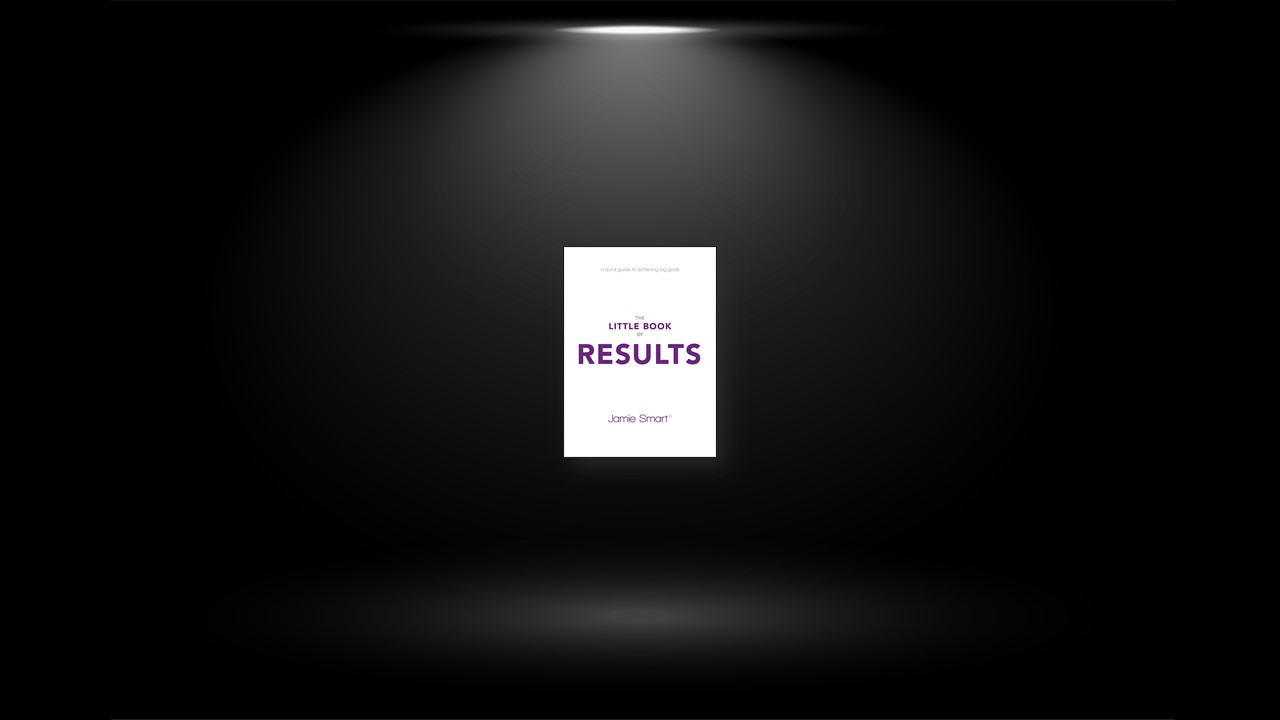Your biggest return on investment
Results… We all want them, yet many of us struggle to achieve them. Or we get spectacular results in one area of life, while failing to attain even modest success in other important areas. There are plenty of examples…
The successful businessman who knows he needs to lose weight and get fit, but never seems to find the time. The manager who’s passionate about becoming a consultant or executive coach, but fears stepping away from the security of a full-time job. The graduate who wants to find work with meaning and purpose, but doesn’t know where to start.
You probably know someone who dreams of writing the book/starting the business/clearing the debts/finding the soulmate/creating the lifestyle/getting the six-pack/making that first million, but never quite seems to get there. You may even be that person.
Five essential questions
Motivational speakers claim we can achieve whatever we want if we believe in ourselves, set clear goals and work hard. But history is littered with examples where enormous self-belief combined with clear goals and massive action yielded few or no satisfying results. Why? As you’re going to discover, there are powerful but little-known factors that have a profound impact on your ability to create results.
- What are the key factors that influence your ability to create the results you desire, and how can you develop those factors?
- What are the obstacles that may have been holding you or your organization back from getting the results you want, and how can you avoid, eliminate or overcome those obstacles?
- How can you increase your impact on other people, engaging them in your enterprises and/or empowering them to create the results they desire?
- How can you leverage your true nature as a results-creator and a leader to get greater control of your livelihood, whether as a solopreneur, as an entrepreneur or by playing a bigger role in your organization?
- How can you do all of this in a way that’s healthy, natural, authentic and enjoyable?
A trick of the mind
The single biggest barrier to progress – and the cause of most frustration, stuckness and suffering – is an innocent and widespread misunderstanding about how our minds work. This trick of the mind is validated and reinforced by the media, politicians, teachers, employers, friends, relatives, self-help books and even our own perceptual systems
Your experience is being generated from within you, right now! Look around at the environment you’re in. Your experience of everything you can see, hear, feel, taste and smell is being generated from within you, moment to moment (a process that neuroscientist and consciousness researcher Anil Seth describes as ‘a controlled hallucination’). Even the things you can see and hear ‘out there’ are experiences being generated from within you (albeit with a live data-feed). It seems to us as though we look out through our eyes at a world ‘out there’, but our perception is less like looking through the lens of a camera and more like a projector or a set of virtual reality goggles.
You were born into the principle of THOUGHT just as you were born into the principle of gravity. You use the principle of THOUGHT, automatically and effortlessly to generate a coherent perceptual reality, moment to moment. You’re always living in a THOUGHT-generated perceptual reality and experiencing it as an actual reality.
Why feelings of worry or anxiety are not the problem
Everyone sometimes experiences feelings of insecurity, such as worry, anxiety or self-doubt. That’s not a problem. Those feelings are giving you feedback on the totality of your THOUGHT-generated experience in the moment, and that’s really useful. The problem is that you sometimes believe your feelings are letting you know about something other than THOUGHT.
Your feelings are a reflection of THOUGHT in the moment and nothing else. Feelings are impersonal. Our feelings don’t know anything about our past, our future, our circumstances, other people or what we’re like. When we mistakenly believe our feelings are letting us know about something other than THOUGHT in this moment, we’ve slipped into La-la Land.
We sometimes believe we’re in La-la Land
‘La-la Land’ is a nickname for a world that people believe in, but that doesn’t actually exist. Some are literary, such as Narnia, Discworld and Middle Earth. Some are scientific, such as the geocentric model (astronomy before Copernicus), miasmas (medicine before germ theory) and the flat earth. But they’re all fictional.
When we believe in a La-la Land, we’re believing the world works in a way that is not based in reality. We’ve slipped into misunderstanding and contaminated thinking. And here’s the thing:
You’re not built for a non-existent La-la Land… You’re built for reality.
The fact that you understand the reality of germs means you wash your hands regularly and cover your mouth when you cough. These behaviours are grounded in a better understanding of reality than people who lived 200 years ago had. As a result of having a better understanding of how life already works, you get to prosper, thrive and be healthy. Your understanding is aligned more closely with the reality you’re built for.
When you’re ‘hanging out in reality’, your innate capacities are fully available to you. You get intuitions about when to take action and when to rest. You have a natural capacity for connection, insight and realization. But it’s a little harder to come by when you’re hanging out in La-la Land. The moment a person believes that they’re feeling something other than THOUGHT in the moment, they’ve stepped into an illusory non-reality; a world that doesn’t exist. It’s tough to get results there!
But here’s the best bit. You already live in reality and you always have done. The outside-in non-reality is a dream, an illusion, a fantasy world. The only place La-la Land exists is in our heads. In reality, all is well, and you have everything you need to respond powerfully in the moment.
The Source of Superb Performance
‘If you think too much about a race you just make yourself more nervous…’
Olympic Gold medal-winner Usain Bolt is currently the world’s fastest sprinter. Before the race, while his competitors are running through complex pre-race rituals, Bolt fools around and chats with the crowd. When asked why, he said, ‘I’ve learned over the years that if you think too much about a race you just make yourself more nervous.’ Bolt understands that wherever you’re headed, clarity is your best ally for helping you get there. So why is it that some people produce world-class performances over and over again, while others struggle when the heat is on?
High performance leads to superb results
People give their best performances when they’ve got nothing on their mind. When your mind is clear, you’re available to the moment, connected to your innate source of guidance, resilience and creativity. And where does high performance come from? Your state of mind.
How your state of mind affects your performance
In their December 2014 Harvard Business Review article, ‘How Your State of Mind Affects Your Performance’, researchers Caillet, Hirshberg and Petti reported their findings from a survey of 740 leaders internationally. 94% of the leaders identified the states that drove the highest levels of performance as ‘calm’, ‘happy’ and ‘energized’ (CHE). At the other end of the spectrum, leaders admitted to spending a certain amount of time in low-performance states; ‘frustrated’, ‘anxious’, ‘tired’ and ‘stressed’ (FATS). The article suggested that CHE states not only drove high performance; these states also seemed to be ‘transmitted’ to other people. Conversely, the FATS states often delivered short-term results, but were damaging in the long term, particularly in the domain of relationships.
When we struggle with FATS states, we’ve been hijacked by contaminated thinking. The CHE states, on the other hand, are natural for us when our minds are free from contaminated thinking.
Tribal leadership
Who are a group of people you want to serve? Becoming the leader of a tribe puts you in an extremely influential position. Members of the tribe will give you their attention, their loyalty, their time and their money on an ongoing basis if (and only if) you continue to show them that you are worthy of it, by…
- ‘getting’ their reality, understanding their worldview and genuinely caring about them
- helping them solve their problems, achieve their goals and get the results that matter to them
- being honest, authentic, transparent and trustworthy
- being courageous, true to yourself and doing what makes sense to you.
You show you’re worthy of being the leader by leading… by going first and giving value to the people you’re here to serve. So what audience or group of people would you love to make a difference to? This isn’t about ‘finding your niche’; it’s not even about you! It’s about selecting a group of people you want to serve.
What’s your story?
Tribal leaders tell authentic stories that resonate with the worldview and values of the people in their tribes. These stories turn off as many people as they turn on; they make it easy for someone to decide whether this tribe is for them or not. For example, in her TED talk, The Art of Asking, Amanda Palmer tells the story of her rise from street performer to rock star, and the importance of vulnerability, connection and the willingness to ask for help. Her story attracted plenty of criticism, but the people who resonated with her worldview knew instantly that she was someone they wanted to listen to. Many thousands of her tribe members engage with each other on dedicated Facebook groups they’ve created for the purpose.
Your authentic stories make it easier for people to connect with you and relate to you, establishing your credibility to lead the tribe. Why? Because the story you tell resonates with a story your tribe members are telling themselves (or want to tell themselves).
Separate realities revisited
As you get clarity about who you want to become visible to, it can be profoundly useful to find out more about how they see the world. This can help you get clarity about three important things:
What they perceive as value. How you can provide that value, or something they’ll value even more highly. How you can connect with, engage and educate them to the point where they’re able to make an informed decision about what you’re offering.
The better you understand your audience’s world view (e.g. what they believe, value, fear, desire, struggle with etc), the more easily you can connect with them, and the more eloquently you can communicate with and educate them.


